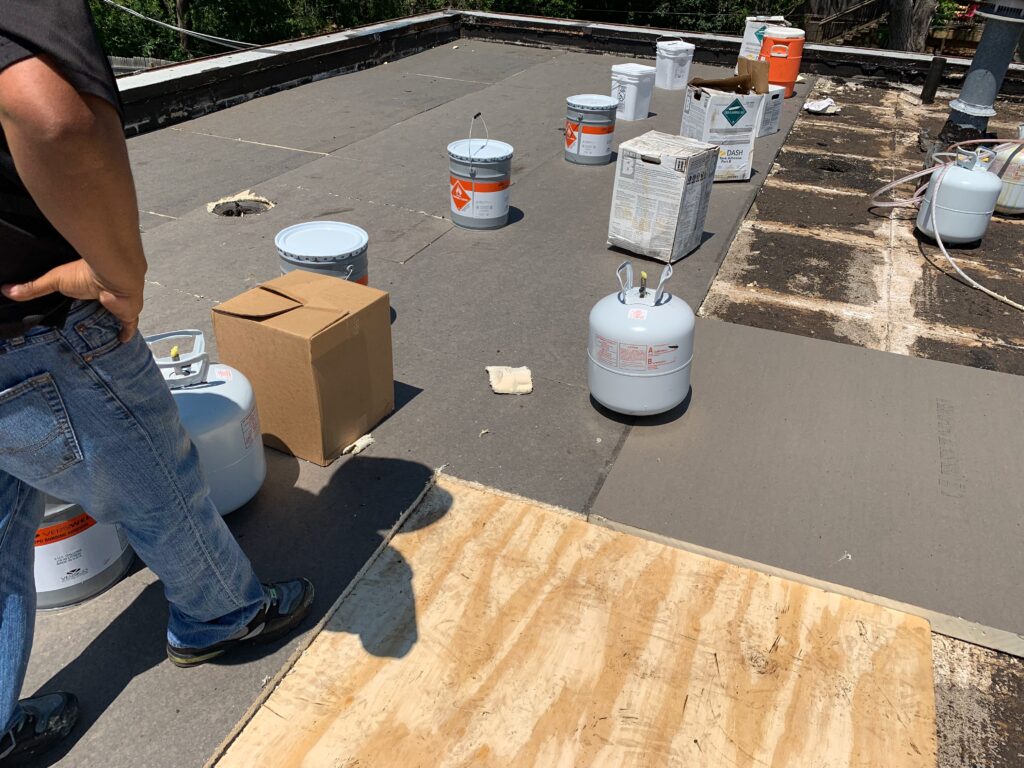How to Seal a Flat Roof?

There are countless things that you can do to extend the life of your roof. Scheduling regular roof inspections is a great way to catch and correct small problems early-on, and well before they’ve had the chance to spiral out of control. Diligent efforts to keep your gutters clean, and taking steps to properly insulate your roof are additional measures that will make this important building feature last longer. Even with all these things, however, your roof is still constantly exposed to the outdoor elements. Depending upon your location, it’s virtually guaranteed to face the ravages of wind, rain, hail, snow, and the sun’s UV rays. Although most roofing styles typically last at least 20 years before requiring full-on replacement, exposure to the elements gradually takes its toll. If you’ve got a flat roof, properly sealing it will add an extra and essential layer of protection that helps stave exposure-related damages off.
Sealants are an invaluable addition to flat roofs. Absent of any significant slope, these surfaces have a tendency to collect debris, standing bodies of water, and other potentially detrimental accumulations. Once a sealant has been applied, not only will it act as a barrier between the roof and all surface debris, but it will also serve as a buffer against the elements. In fact, there are even some sealants on the market that can make flat roofs more fire-resistant and more resistant to harmful growths of algae and mold. If you’re sold on the value and benefits of sealing a flat roof and want to tackle this process on your own, read on to learn more about how it’s done and why it works so well.
The Do’s and Don’ts of Sealing Your Flat Roof
To perform like it should, the sealant on your flat roof should be applied in one solid, seamless layer. If you’ve never done this before, it requires a significant amount of skill. This is why many homeowners opt to outsource this work to professional roofing contractors rather than handling it themselves. With the wrong tools, the wrong sealant, and the wrong application techniques, you run this risk of leaving tiny, pinhole-sized openings that are actually large enough to let moisture in. Worst of all, once a sealant is on, the moisture that enters into these holes won’t be able to get back out. This simple and all-too-common DIY mistake can lead to severe roof damages. Trapped moisture can cause roof wood or the wood that makes up the roof’s substrate to rot.
When it comes to choosing a sealant for your roof, you’ll need to first consider the type of materials that it’s comprised of. Metal roofs require different sealants than do concrete roofs. You should also account for the age of your roof, the climate in which you live, and the types of debris and other elements that the roof is most likely to encounter. There are:
- Rubber or elastomeric roof sealants
- Silicone roof sealants
- Sealants that are designed specifically for combatting UV ray damage
If you’ve got a flat roof and no tree covering, and live in a home that gets near-constant sun exposure throughout the year, UV protection is critical. Ultraviolet rays can actually change the molecular structure of your shingles to cause curling, buckling, and other forms of deterioration and degradation over time. If the interior of your home is constantly hot and humid, you may want to opt for a breathable silicone sealant. This type of sealant is designed to let moisture from cooking, showering, and other humid indoor activities escape. If you’re unsure of the best sealant type for your home, ask a professional roofer to help you pick the right one. Just as a good sealant can be beneficial, the wrong choice can lead to a number of frustrating issues.
It’s absolutely vital to consider the condition of your roof before putting a sealant on. After all, you certainly don’t want to trap existing pockets of moisture in. If your roof is badly in need of repairs or severely aged, these are concerns that you want to address before worrying about additional protection. If you want to learn more about sealing a flat roof or if you’d like to have your roof’s sealant expertly applied, we can help. Call us today at 913-850-6556.
